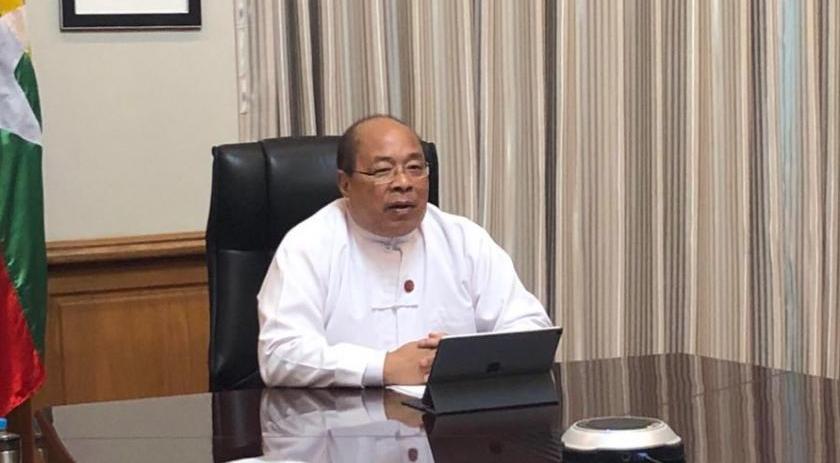
Myanmar could see GDP growth of six percent next year if the action plans put forth under the government’s COVID-19 Economic Response Plan (CERP) are achievable and the number of new COVID-19 cases continues to be under control, said U Thaung Tun, minister of Investment and Foreign Economic Relations.
In a webinar organised by Australia-Myanmar Chamber of Commerce on May 29, U Thaung Tun said the country faces an unprecedented economic disruption that is similar to the Great Depression in the 1950s. But Nay Pyi Taw has been taking a suite of measures to counter the fallout and ensure rapid reforms.
He highlighted the World Bank, International Finance Corporation and the Asian Development Bank have shared that “there is a silver lining” in the country’s economic outlook, with GDP growth potentially hitting 6pc or higher in 2021.
To overcome the crisis, he said, Myanmar needs a “Whole-of-Nation” approach, under which the government leads with everyone on board in implementing the CERP.
The government in late April announced the CERP, a 15-page document containing seven goals and 36 action plans. It includes plans to increase government spending by extending low-interest loans, tax waivers and deferrals to affected businesses as well as cash transfers for vulnerable households and expedite investment approvals, among others.
More details of the CERP’s implementation for the public will be announced in the coming weeks, said the investment minister.
U Set Aung, deputy minister of Planning, Finance and Industry, who was also in the webinar, said the government will strengthen coordination between ministries and the private sector to ensure the implementation of the CERP is as smooth as possible under the circumstances.
U Set Aung said the focus of the plan is short term in nature and that the government’s aim is quick implementation to maximise output.
This has been gaining momentum. It is expected, for example, that the first emergency loans will be disbursed to all small and medium-sized enterprises (SMEs) that qualify by mid-June.
As the decline of government revenue and spending as a result of diverting funds to managing COVID-19 could pose undesirable effects on the country, it is critical to increase public spending and inject funds into the economy, U Set Aung said.
“Within a very short period of time, we have mobilised trillions of kyats of funds from government agencies and billions of dollars from development partners,” he said.
The CERP also aims to expedite the investment approval process in Myanmar.
U Bharat Singh, Deputy Minister of Investment and Foreign Economic Relations, who also participated in the webinar, said approved Foreign Direct Investments (FDI) has exceeded US$4.1 billion in the current fiscal year.
He added the country is on track to achieve the $5.8 billion approved FDI target for the current fiscal year.
U Thaung Tun said the government is prioritising investments that create jobs, especially proposals for industrial parks that Myanmar has already formed agreements, including with China, Thailand, Singapore, Japan and Korea.
The government is also looking at investment in areas of agriculture and construction for infrastructure, in particular, and that Myanmar will be moving forward on some major projects in the next few weeks, U Thaung Tun said.
He added that energy will be required for Myanmar’s manufacturing industry to “take a leap forward.” The government has been arranging proposals to establish more energy generation projects, including renewables.
U Thaung Tun acknowledged the backlash, but confirmed that the tender will go ahead under tight deadline.
“We wanted to proceed with the 1000MW solar tender quickly, but we’re getting flagged for going ahead with it quite fast,” he said.












